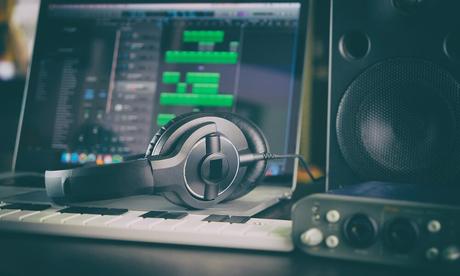If playing and making good music is what interests you, there are many equipment options you can use for this purpose, one of which is an audio interface.
An audio interface enables you to record and playback audio from a computer. While playing music directly from a computer can already be pretty good, you can still do so much better with a professional audio interface. Furthermore, when you're into recording, an audio interface is one of the basics you'll need to have.
Here's what an audio interface can do:
1. Connects Devices To Your Computer
The most basic task that an audio interface can do is connect devices to your computer, such as microphones and guitar cables, which are usually recorded via a USB. In addition to these devices, an audio interface also connects those devices responsible for output sounds, like headphones, speakers, and studio monitor speakers.
An audio signal is taken in and translated to your computer so the sound gets converted to your microphone and other external devices. Because of its ability to connect devices, an audio interface serves as the front end of your entire recording system.
2. Produces More Professional Sound Quality
When you're a professional musician or working in the music industry, you'll need to take the extra mile in ensuring that your sound quality is superior. Unfortunately, a computer's sound card isn't enough to meet this purpose. Hence, the need for an audio interface.
A more professional sound quality produced by the audio interface results from the built-in pre-amps that improve the quality and the tone of these vocals. To ensure superior sound quality, you'll also need to take extra caution to ensure that you're buying a very good quality audio interface, such as the ones that are enumerated at SustainPunch.

3. Great For Podcasting
If you're not here for the music but rather to create audiobooks, an audio interface is necessary for your podcasts. These work especially well for project studios or DJ set-ups where only two to six studio tracks are needed.
With this set-up, audio monitoring controls and headphone jacks are available for desktop use.
4. Reduces Latency
Latency refers to the time gap between when you play a note and when the computer picks it up. While this may sometimes only be a second, it can complicate the recording process, or even make it impossible.
For minor recordings, this may be possible through the built-in sound card. But remember the basic premise that a computer's sound card isn't necessarily made for this purpose.
Thankfully, an audio interface can successfully reduce latency and make sound recordings.
5. Offers MIDI Outputs
An audio interface can produce MIDI (Musical Instrument Digital Interface) by connecting a MIDI keyboard or MIDI controller to your computer. The input enables you to play software-based instruments or virtual instruments.
With this kind of output, you can now connect an external MIDI sound source like a drum machine or synthesizer.
6. Enables You To Connect Electric Guitar Or Bass Without An Amplifier
One of the best things that an audio interface can do is that it allows you to record an electric guitar or bass even without an amplifier. This is because the audio interface's pre-amps can amplify the signal sent to and from your computer.
This function works through the amp stimulator it possesses. While an audio interface isn't a substitute for recording with an amplifier and a microphone, it's still a great alternative for doing many musical recording functions.

The Best Equipment To Use With An Audio Interface
An audio interface is often referred to as the heart or center of a recording studio. For the functions above to work well, it has to be coupled with the right equipment. Hence, the need for essential tools to connect with the interface-both directly or indirectly.
Here are some pieces of equipment to pair with an audio interface:
* Powered studio monitors are the most common tool used with audio interfaces. Depending on the set-up that you have, your monitors will vary in length.
* Studio headphones enable your monitor to look more professional.
* Solid and dynamic microphones, along with a large-diaphragm condenser microphone, expand your sonic palette.
* Small diaphragm condenser microphones are great for capturing cymbals and other instruments
ConclusionNow that you know about what an audio interface is, you might be more convinced that this is something you need to have. Think of this as an investment for the music career you're trying to build.
With an audio interface, you can connect instruments, signals, and professional microphones to your computer. More than that, you're able to improve the overall sound quality given off by your computer.
Whether you're a beginner or a long-time aspiring DJ, an audio interface is one of the equipment options that can help improve and advance your career or hobby.

